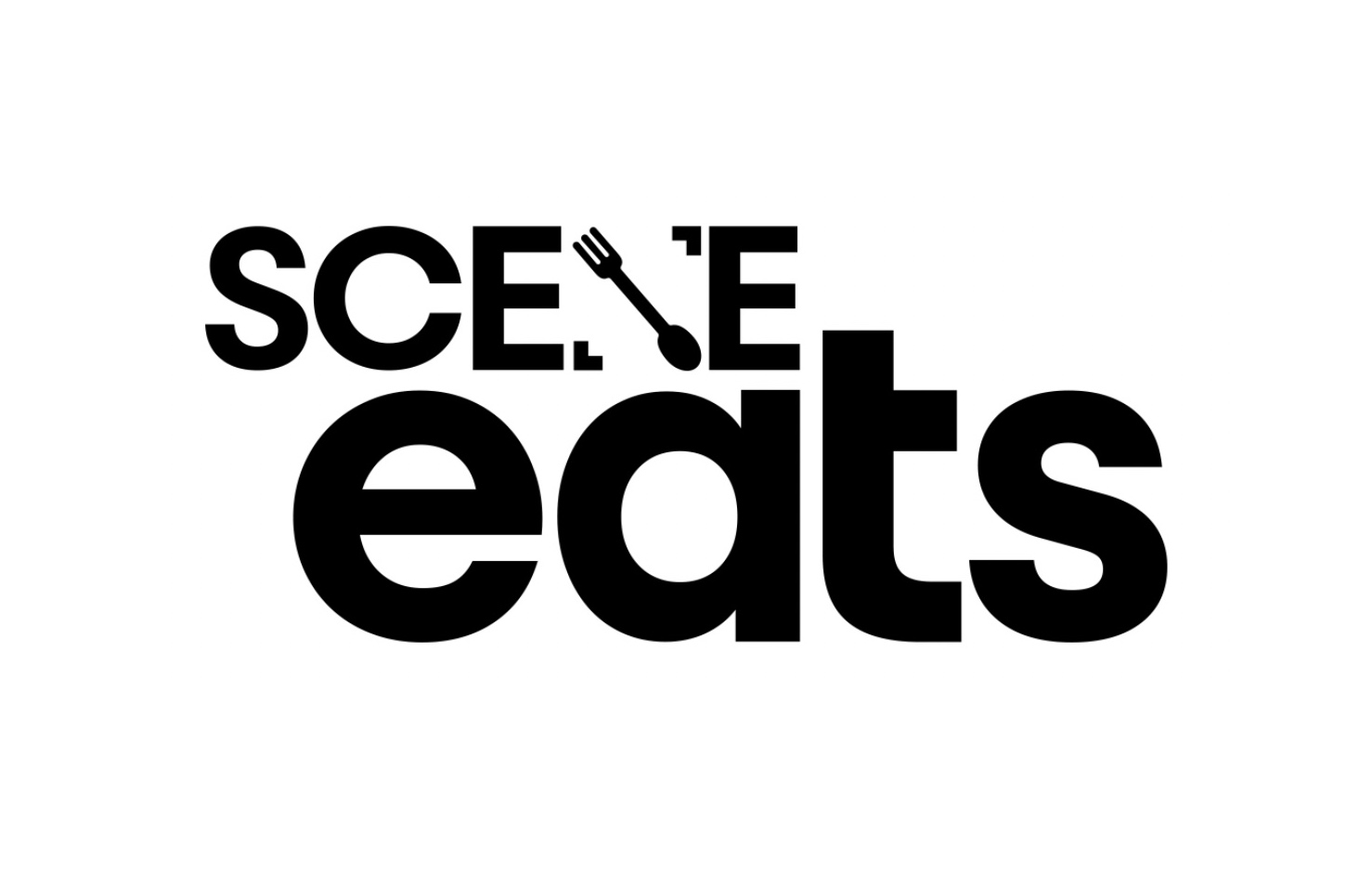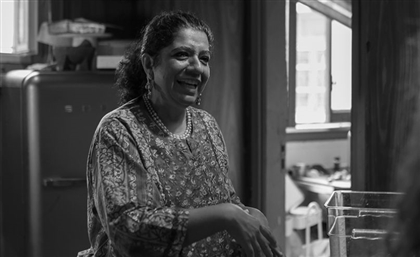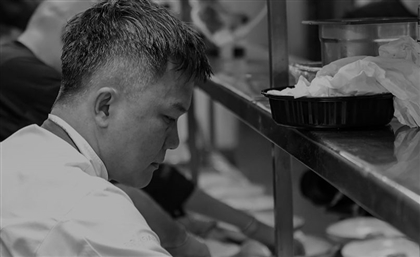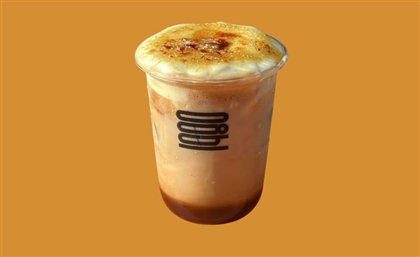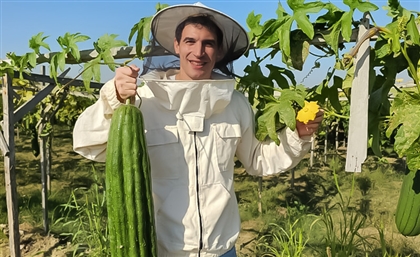Chef Fayçal Bettioui Deconstructs Art for an Architecture of Taste
At Cairo Food Week's third edition of the Architecture of Taste lunch, three chefs deconstruct Hyatt Centric's art installations into meticulously built dishes.
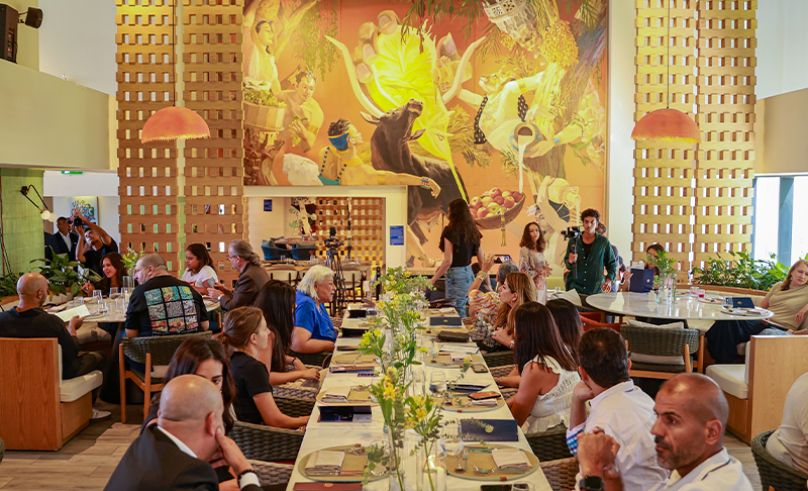
Cairo Food Week’s Architecture of Taste is less a lunch and more an editorial project: a WHEN WE EAT concept that explores how gastronomy and design borrow grammar from one another, how plates can mirror facades and sauces can read like brushstrokes.
For its third edition, three acclaimed chefs were invited to Hyatt Centric Cairo West, Egypt’s first art hotel, to treat the estate’s eleven signature artworks as source material. Six of the eleven art installations are then translated, not by literal mimicry but by distilling line, colour, material and origin into flavour, texture and service. The experiment questions the interaction between food, culture and art: chefs draw from land, season, agriculture and collective memory to tease out what an artwork already contains and what it can give back when tasted.
This year’s curators—Fayçal Bettioui of Table 3 Casablanca, Clara Dayoub of Maison Choc, and Muhammad Shibin Hotel’s Culinary Director—worked as a small studio, each bringing distinct training and reference points to the same brief. Bettioui carried coastal Moroccan memory and a career shaped by French and Japanese techniques; Dayoub offered a patina of confectionery precision and contemporary inventiveness; and Shibin brought local stewardship and intimate knowledge of the hotel’s public life.
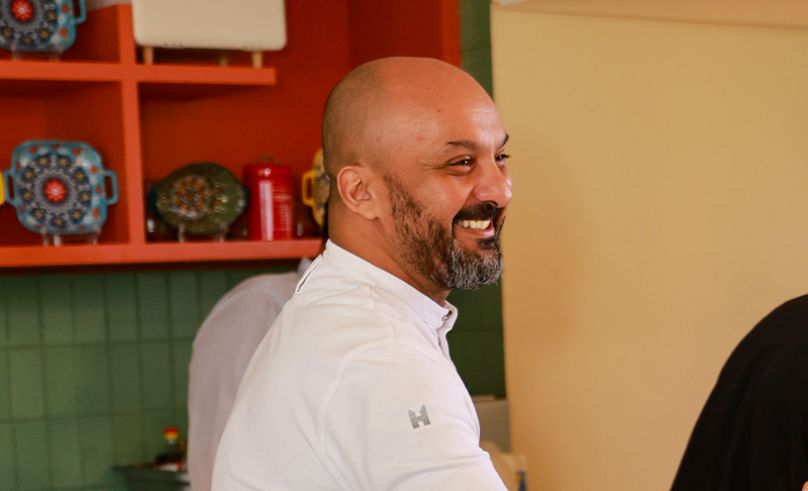 Together they moved between homage and interpretation, asking whether six artworks and a single lunch can hold the histories they gesture toward.
Together they moved between homage and interpretation, asking whether six artworks and a single lunch can hold the histories they gesture toward.
When asked about the interaction of food and art, Chef Fayçal laughs and tells SceneEats, “I don’t think of food as art. I think food is beautiful and there’s definitely a lot of creativity involved, but it’s just not the same. When you see a painting, you don’t have to buy it if you don’t like it. But if you come to my restaurant, and pay for the food, I have to make sure you enjoy it.”
Chef Fayçal Bettioui belongs to the school of thought that food is less an artistic venture and more a delicate balance of biology and chemistry. Throughout a degree he didn’t continue, and the many restaurants he worked in - alongside Thomas Keller and David Bouley, inside his own restaurant ‘Fez’ in Miami, and inside his Michelin-starred restaurant Zur Krone in Germany - that was the throughline: culinary ventures are not sporadic. They are carefully studied.
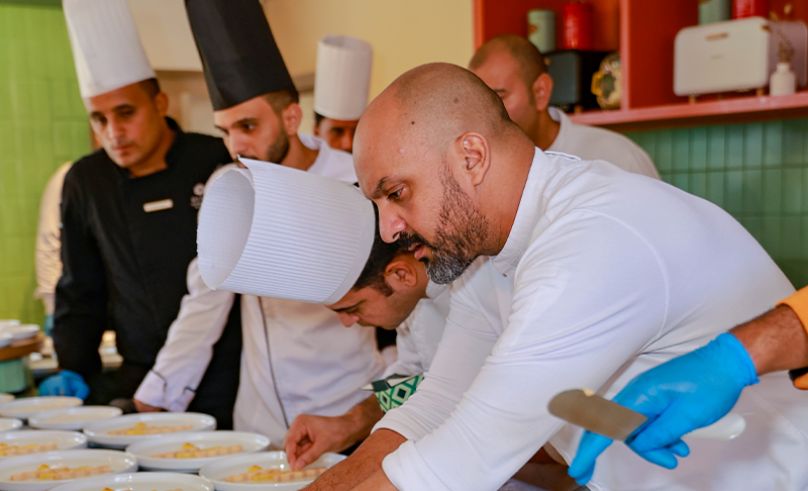 At the Architecture of Taste lunch, Chef Bettioui worked in a team, which is familiar territory; the cook cites the process of working with a team, in the early stages of his career, to have been akin to having a family away from home. Behind the kitchen counter, Bettioui moved with scathing precision, but was not opposed to laughing at the occasional dropped glass.
At the Architecture of Taste lunch, Chef Bettioui worked in a team, which is familiar territory; the cook cites the process of working with a team, in the early stages of his career, to have been akin to having a family away from home. Behind the kitchen counter, Bettioui moved with scathing precision, but was not opposed to laughing at the occasional dropped glass.
The opening dish, ‘Land of Civilisation’ by Mohamed Banawy, was prepared by both Chef Shibin and Chef Bettioui. It arrived like a framed study: alginate tang draws a precise boundary around cured meats, asparagus stands upright and architectural, and a soft duck confit arancini sits pretty at the centre. The last course, a final act of architectural recombination between Sayed Waked’s ‘Together’ and Ibrahim Khattab’s ‘The Seven Pillars of Egyptian Identity’, was fittingly a collaboration between Chef Deyoub and Chef Bettioui. In parallel to its collaborative creation process, it left assembly up to the table, asking that they work together to build each group’s individual desserts, where the sweet and the starchy and the bitter argue and then resolve into a civic form that feels both ancestral and newly built.
In between, Chef Bettioui’s decades of experience shone through four courses. One involved foie gras, astonishingly creamy, is counterbalanced by pineapple in two modalities: bright, fresh flesh and a concentrated paste that severs richness with acid. Salt flakes catch the light like a sculptor’s final polish while a whisper of duck soy or oyster grounds the dish in umami’s dark architecture. When diners glance at Omar Toussoun’s sculpture outside, by Hyatt Centric’s pool, the meal becomes a communal realisation: Chef Bettioui had sculpted Omar Toussoun’s ‘Waves’ into a meal.
In the moments after Hyatt Centric’s team lifts the current dish and quickly shuffles out with the next, everyone’s gaze returns to the menu: next on is a supposed rendition of Ehab El Toukhy’s ‘Sea of Life’, a series of sculptures by the pool. A sea bass tradito arrives surrounded by plum dashi, lending a tang that reads floral and mineral at once, and topped with fresh radish that interrupts with a clean, directional snap, reorienting the collective palate.
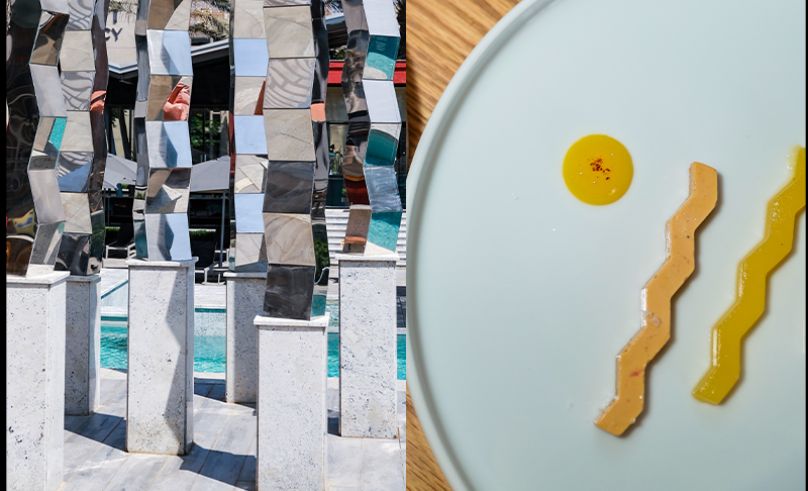 Sea bass is never served raw — in both Morocco and Egypt, it is served grilled or fried. The seafood choice felt deliberate, a subtle but powerful insistence that Arab cuisine too fits on fine dining tables. The fish had arrived only the night before from Alexandria, Chef Bettioui later revealed, my hometown. “When I was in Germany, and I was creating menus daily based on what’s in the market, there was always a questions: Would this work in Morocco? Ever since I went back, we put whatever the ocean gives us on the plate. As creative as you can get in technique, you have to stick to basics: using ingredients you can find in the market seasonally.”
Sea bass is never served raw — in both Morocco and Egypt, it is served grilled or fried. The seafood choice felt deliberate, a subtle but powerful insistence that Arab cuisine too fits on fine dining tables. The fish had arrived only the night before from Alexandria, Chef Bettioui later revealed, my hometown. “When I was in Germany, and I was creating menus daily based on what’s in the market, there was always a questions: Would this work in Morocco? Ever since I went back, we put whatever the ocean gives us on the plate. As creative as you can get in technique, you have to stick to basics: using ingredients you can find in the market seasonally.”
In his opening note, the only insight into the lunch Chef Bettioui mentioned was the incorporation of milk and honey into his dishes in honour of the duo’s significance in Egyptian history. At course number five, a collective awe overtook space as we realised how the ingredients would present themselves: into an art installation of Bettioui’s making. A light tinge of orange blossom is threaded through milky, honeyed panna cotta; minute lemon dollops shard in select hexagons and a yoghurt sorbet behaves like gentle gel. These interludes are not amuse-bouche spectacle but calibrations, moments that reset the palate and remind you that dichotomy — floral vs lactic, soft vs brittle — is a device for clarity. I glance behind me: Marwan Sabra’s ‘Garden of Divine Offerings’ is muralled, a distant reflection of the dish before me.
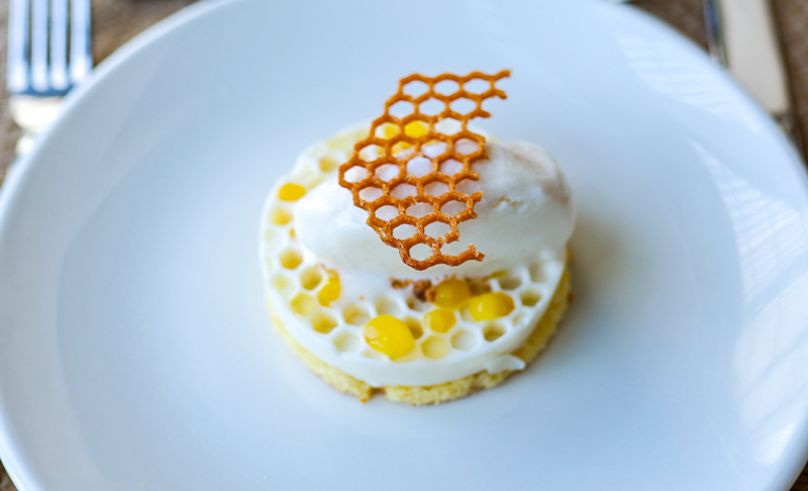 What lingers after the lunch is less a list of favourite bites than it is an awareness of method. Bettioui’s Architecture of Taste insists that food, like architecture and art, is a grammar of relations — proportion, negative space, repetition, and counterpoint. The hotel’s galleries supply reference points while the dining room supplies witnesses. Together, they make the act of deconstruction and subsequent reconstruction social.
What lingers after the lunch is less a list of favourite bites than it is an awareness of method. Bettioui’s Architecture of Taste insists that food, like architecture and art, is a grammar of relations — proportion, negative space, repetition, and counterpoint. The hotel’s galleries supply reference points while the dining room supplies witnesses. Together, they make the act of deconstruction and subsequent reconstruction social.
- Previous Article Molokheya Pasta & the Performance of Fusion Dining at Scalini
- Next Article Sultana Ice Cream Now Makes Edible Soap Bars
Trending This Month
-
Nov 25, 2025
-
Nov 25, 2025



